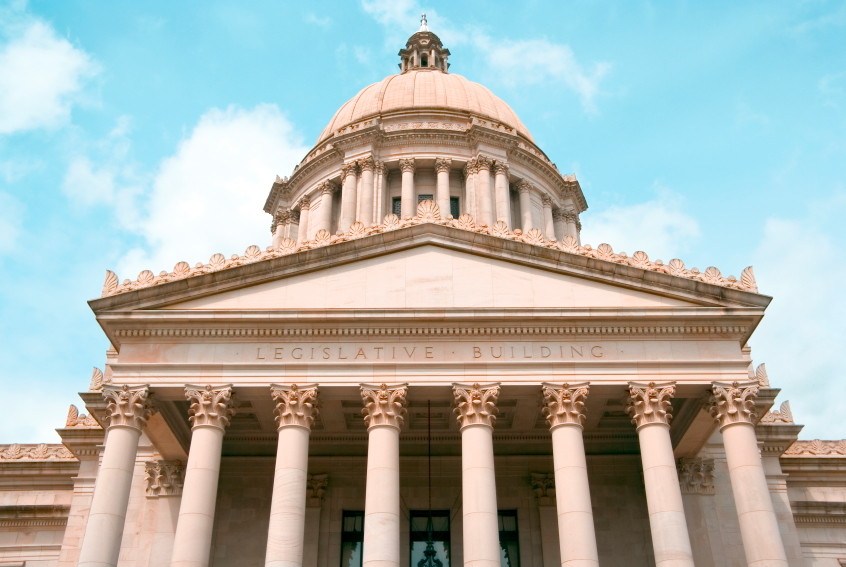 Editor's Note: As part of our yearlong exploration of the intersection of families, guns and violence, ParentMap decided to ask the question: How secure are our schools, and why? See our main story here about national trends and changes in school security, along with the questions you should ask about your child's school.
Editor's Note: As part of our yearlong exploration of the intersection of families, guns and violence, ParentMap decided to ask the question: How secure are our schools, and why? See our main story here about national trends and changes in school security, along with the questions you should ask about your child's school.
Like most states, Washington has a mix of rules regarding school safety and security. See our investigation of how campus safety has changed since the Newtown shootings, and read below for laws and policies that impact Washington schools.
Some highlights:
- Washington does not track which security measures various schools and districts have in place; state experts say there’s wide variability. (Districts in Washington, as in many states, aren’t asked to report this information.)
- The state requires schools to follow its rubric to create a comprehensive safe school plan and review it annually. It’s up to the district, not the state, to vet the plans.
- Districts are required to follow anti-bullying rules and conduct safety drills, and they are “encouraged” to run practice “tabletop” exercises for various emergency scenarios with first responders. Regular collaboration between first responders and schools varies from place to place; state officials expect closer ties with the passage of new state rules.
- The state’s School Safety Center — with one full-time employee and an advisory board — offers safety resources and can train public and private schools. Center director Mike Donlin says his office informally reviews Washington school safety incidents. “The most effective checks and balances ask, if there’s an emergency, is the plan implemented properly?” So far, he says, the answer is yes.
- Some say Washington is in the forefront with its Rapid Responder program, a Web-based system launched in 2003 that first responders can use to access critical information about every public school in the state (comprehensive floor plans, photos, emergency plans). As part of the program, detailed logistical plans are hammered out between first responders and the school in the event of an active-shooter incident. Schools are supposed to use the mapping system in a drill at least once a year. Approximately a dozen private schools have paid to join Rapid Responder; other private schools work independently with first responders. To what degree schools and first responders are actually using the program (beyond the required once-a-year use) comes down to local decision. Because there’s no reporting requirement, it’s hard to know if all schools are actually following the letter of the law.
Change is on the way:
 In 2013, Washington lawmakers adopted Senate Bill 5197, making the Evergreen State one of 10 states to pass laws in the wake of Newtown focused on improving school facilities through state-level building standards related to security, creating task forces to study ideal building design and offering new grants for security upgrades .
In 2013, Washington lawmakers adopted Senate Bill 5197, making the Evergreen State one of 10 states to pass laws in the wake of Newtown focused on improving school facilities through state-level building standards related to security, creating task forces to study ideal building design and offering new grants for security upgrades .
The state has put money behind improving emergency response, setting aside $10 million in competitive grants (not all 295 school districts will get a piece of the pie, even though they are expected to eventually comply) through SB 5197 for school systems to adopt “an emergency response system using evolving technology” to speed and improve law enforcement response to a threat or emergency.
Signed into law in May, SB 5197 also calls on school boards to “consider” a host of safety aspects for schools being built or remodeled, as well as to “consider” installing a perimeter security control mechanism or system for all schools (such as automatically closing gates) — but it provides no funding. By fall of this year, the state plans to have model policies and recommendations for emergency response systems and building safety.
Since the Newtown shootings, Washington also has enacted laws that:
- Beef up youth mental health training for school counselors, psychologists, social workers, nurses and teachers. For the next school year, districts are to adopt a so-called mental health first aid plan (the state is to issue a model this year; the source of funding is unclear) to help students in distress.
- Increase the number of annual lockdown drills from one to three and add one “other safety-related” drill, determined by the school (since Sandy Hook, more schools are conducting active-shooter drills — one possibility). The total number of drills per year remains unchanged (the number of fire drills decreased.)
- Call on school districts to annually review, update and report to the Washington Association of Sheriffs and Police Chiefs on a slew of safety procedures, “to the extent funds are available.”











